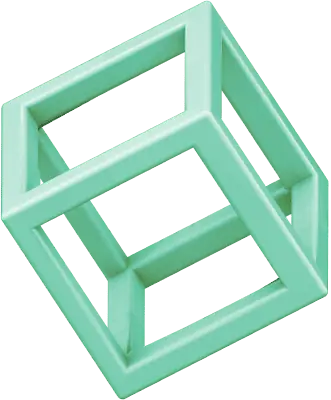When it comes to logo design, simplicity isn’t just a style—it’s a strategy. A well-designed logo should be easy to recognize, memorable, and versatile. However, in an effort to stand out, many businesses fall into the trap of overcomplicating their designs, cluttering them with unnecessary elements that dilute their message.
This article was prepared by experts at Turbologo, a company specializing in logo creation and design solutions.Drawing from years of experience helping businesses craft effective logos, we’ll guide you through the process of avoiding common pitfalls and embracing simplicity.
Why Simplicity Is the Key to a Strong Logo
A simple logo isn’t just aesthetically pleasing—it’s functional. The most iconic logos in the world, like Nike’s swoosh or Apple’s apple, are strikingly simple yet immediately recognizable. Why? Because simplicity makes a logo versatile and timeless.
Overly complex designs can confuse viewers, especially when scaled down or used across different media. A simple logo communicates your brand’s identity clearly and leaves a lasting impression on your audience.
The Risks of Overcomplicating Your Design
When designing a logo, it’s tempting to add as much detail as possible to make it stand out. But this approach can backfire. Overcomplicated logos often look messy, are harder to remember, and lose their impact when resized.
Imagine a logo that includes intricate patterns, multiple fonts, and a rainbow of colors. While it might seem creative, it’s likely to overwhelm the viewer and fail to convey a cohesive message. Instead of adding more, focus on refining the core elements of your design.
Identifying the Core Message of Your Brand
Before you even start sketching ideas for your logo, ask yourself: What does my brand stand for? What message do I want to communicate?
Your logo should represent your brand’s essence in a single glance. For example, a technology brand might prioritize innovation and sleekness, while a children’s brand might focus on playfulness and warmth. By narrowing down your message, you can ensure that every design choice serves a purpose.
Simplify Your Brand Message with Turbo Logo
Defining your brand’s core message is essential for creating a focused and effective logo. Tools like Turbo Logo make it easier than ever to translate your ideas into a polished design. A logo maker helps you clarify your brand’s identity by offering intuitive features such as customizable templates, AI-generated suggestions, and easy editing options.
With Turbo Logo, you can experiment with different design elements, such as colors, fonts, and icons, to find the perfect combination that reflects your brand’s message. This streamlined approach not only saves time but ensures that your logo remains simple, professional, and aligned with your vision.
Less Is More: Prioritizing Key Elements
To avoid overcomplication, it’s crucial to prioritize the elements that matter most. These typically include:
- Shape: Choose a simple, recognizable shape or icon.
- Color: Stick to 2–3 colors that align with your brand’s identity.
- Font: Select a clear and legible font that complements your design.
By focusing on these key aspects, you can create a logo that is both impactful and uncluttered. Remember, every element in your logo should add value—not distract from it.
Avoiding Visual Clutter: Shapes, Colors, and Fonts
One of the easiest ways to overcomplicate a logo is by using too many shapes, colors, or fonts. For example, combining multiple geometric elements might seem innovative but can result in a design that feels chaotic. Similarly, using more than one or two fonts often looks unprofessional.
Stick to a cohesive approach. Choose one primary shape, a limited color palette, and a single font that conveys your brand’s personality. A harmonious design is far more effective than one overloaded with competing elements.
The Role of Negative Space in Clean Design
Negative space—also known as white space—is an underrated but powerful tool in logo design. It creates balance, prevents clutter, and can even add hidden meaning to your logo.
Think of the FedEx logo, which uses negative space to form an arrow, symbolizing forward motion. By incorporating negative space thoughtfully, you can make your logo more engaging while keeping it clean and simple.
When to Say “No”: Filtering Out Unnecessary Details
As your logo evolves during the design process, it’s easy to get attached to extra elements. But effective design often means knowing when to say “no.”
Ask yourself: Does this element enhance my logo’s message, or is it just decorative? If it doesn’t serve a clear purpose, it’s better to remove it. Editing ruthlessly will help you achieve a streamlined and professional result.
Testing Your Logo for Clarity and Versatility
Once you’ve finalized your logo, test it across different scenarios. How does it look when scaled down for use on physical and digital business cards, small printable flyers, or even social media icons? Whether it’s displayed on traditional stationery or shared through tools like Uniqode’s business card, your text logo should remain sharp, legible, and consistent. A good logo should retain its effectiveness regardless of size or medium.
Feedback from others is also valuable. Share your design with a diverse group of people and ask for their impressions. If they can quickly understand your logo’s message, you’ve succeeded in keeping it simple and clear.
How Minimalism Can Enhance Memorability
Minimalism isn’t just a trend—it’s a design philosophy that prioritizes clarity and focus. A minimalist logo strips away unnecessary details, leaving only the most essential elements. This makes it easier for your audience to remember and recognize your brand.
For example, brands like Twitter and Mastercard use minimalist designs that are instantly recognizable worldwide. By embracing minimalism, you can ensure your logo is both memorable and timeless.
As graphic design trends continue to evolve, many businesses are shifting towards sleek, simple logos that work seamlessly across digital and print media. Trends such as flat design, geometric layouts, and negative space are gaining traction, reinforcing the idea that a well-balanced and clutter-free logo is more effective in branding.
Keeping It Simple While Staying Unique
Simplicity doesn’t mean sacrificing creativity or uniqueness. The challenge lies in finding a design that is both simple and distinctive. Experiment with subtle details, such as a unique font tweak or a creative use of color, to make your logo stand out while staying clean.
Focus on originality, but don’t overdo it. A strong, simple idea executed well will always outperform a complex design.
The Power of Simplicity in Logo Design
A great logo is like a great story: it’s clear, engaging, and unforgettable. By avoiding the temptation to overcomplicate, you can create a design that speaks volumes with just a few elements.
Remember, simplicity isn’t about doing less—it’s about doing more with less. With a clear focus and a commitment to clean design, your logo can effectively represent your brand and stand out in a crowded marketplace.


